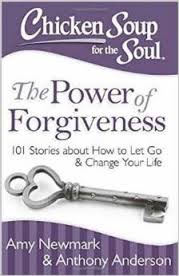My husband and I recently visited the Biltmore Estate in Asheville, North Carolina. For those who aren't familiar with this spectacular place, the Biltmore, a 250-room French Renaissance chateau built by George Vanderbilt in 1895, is the largest private home in America. Since opening its doors to the public in 1930, millions of visitors from all over the world have toured the home and surrounding 8000 acres of gardens, farmland, and forests.
Our tour guide talked about the history of the home and the Vanderbilt family. George Vanderbilt lived at the massive estate for three years as a bachelor until he took a bride, Edith Stuyvesant Dresser of New York in 1898.
"At the tender age of twenty-four," our guide said, "the new Mrs. George Vanderbilt became heiress to the Biltmore, a home containing over four acres of floor space, including thirty-five bedrooms, forty-three bathrooms, and sixty-five fireplaces."
I turned to my husband and whispered, "That's quite a starter home!"
Later that evening as we were getting ready for bed at our hotel, we talked about our first home. After our wedding in 1984, we signed a one-year lease on a tiny two-bedroom bungalow in Norfolk, Virginia. The rent was $275 a month, which was a bit pricey for my meager salary as an accountant's assistant and Jerry's pay as a third-class yeoman in the Navy. But we were so proud of that little bungalow, and I did my best to make it more "homey."
Not a stick of furniture in the house was ours. Every piece was given to us, including a horrid gold and red velvet sofa and chair that, years later, even our local Goodwill was hesitant to take off our hands. And, of course, nothing matched. We were rocking Shabby Chic before it ever became a fashion statement!
The original hardwood floors in the bedrooms were lovely. But the carpet in the living room was a mustard yellow shag that smelled like dirty socks no matter how many times we vacuumed or shampooed it, and the linoleum in the kitchen was worn down to the cement flooring in a few places. No microwave, but we did have a two-burner stove/oven combination and an ancient, wheezing Frigidaire with a freezer compartment the size of a shoe box.
"Remember the washing machine?" my husband asked, and we burst out laughing.
There wasn't a separate laundry room, so a washer and dryer were squeezed into the tiny kitchen next to the sink. The kitchen didn't have adequate plumbing for a washing machine, so every time we ran a load of clothes, we had to place the washer hose in the sink and let the dirty water drain into there. On more than one occasion, the water filled the sink too quickly, and we had to mop up a major mess from the kitchen floor. I bet Mrs. Vanderbilt never had to do that!
In truth, we started out with very little, but we were happy. Over the next thirty years, we worked hard in our chosen careers, lived within our means, and made saving and investments a priority. It wasn't easy, but there's a sense of satisfaction in knowing that, while we're certainly not rich, we're comfortable financially and able to travel and do things for our family because we persevered through the lean times.
I wonder if Mrs. Vanderbilt ever felt that sense of accomplishment. With enormous wealth at her fingertips and a mansion full of servants at her beck and call, she lived a life of privilege that didn't include crawling into work after staying up all night with a sick child. Or celebrating the fact you finally scraped together enough money for a down payment on that home. Or working overtime so your child can go to sports camp.
I truly believe we don't appreciate what we don't earn. And looking back on the sacrifices we made and that cramped, dysfunctional bungalow, I wouldn't trade those early days for anything.


























